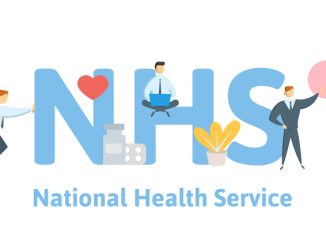
How can we maximise the sharing of primary care services to relieve the burden on general practice? Steve Bradley explores how
The context
Integrated or federated primary care services, offering evening and weekend appointments, phlebotomy and wound care clinics, can reduce the burden on general practice considerably. Many such models are having huge success – seeing fewer patients attending A&E and enabling practices to see many extra patients per week.
Such successes have inspired a significant overhaul of NHS delivery objectives, with the concept of social prescribing, underpinned by shared service delivery, now embedded through the creation of primary care networks (PCNs). But how do PCNs prioritise shared service creation and balance the needs of the local community with the seven national service specifications, whilst also reducing the burden on core GP services? How can both patient and clinician resistance to data-sharing be overcome? And how can clinicians be incentivised and encouraged to collaborate across networks?
Steve Bradley – group managing director at Vision (a Cegedim Company) – outlines the role of digital shared care platforms in enabling a successful transition to a local shared services model.
Reimagining primary care
The need for change within primary care is clear. Services are already over-subscribed, with GP numbers simply not keeping up with the huge rise in demand. According to the BMA, the average wait for a GP appointment has exceeded two weeks for the first time, and nearly nine-in-ten GPs say that excessive workload is preventing them from providing safe, quality care. Recruitment and retention of clinicians remains a major concern; GP numbers have fallen by more than 1,000 since 2015, despite a government commitment to expanding the workforce by 5,000 by 2020.
With government policy firmly focused on shifting patients out of hospital, and back into primary care, wherever possible, the burden continues to increase; the way services are delivered has to be reimagined if existing clinical resources are to have any chance of meeting demand.
The good news is that patients, while potentially concerned about moving away from the traditional, one-to-one GP relationship, are generally positive about the shift to a shared service model, particularly the combination of rapid appointments and access to specialised services such as wound care support. For clinicians, however, the transition from vanguard, GP–led, innovative local service delivery to an imposed and targeted government strategy under the PCN model is creating challenges – both cultural and operational.
Targeted service delivery
A recent report from the BMA reveals that, while GPs recognise that PCNs could make a positive difference, there are serious concerns about workload, with almost two thirds (63%) of clinical directors saying the workloads of practices in their network is unmanageable. Furthermore, while shared service delivery, to date, has been achieved by federations inspired by their own local patient needs and resource challenges, PCNs have very specific targets which will drive strategy.
Codifying the goals of PCNs is clearly important to achieving consistency of shared service delivery models across England. PCNs will be expected to provide a wide range of primary care services to patients, involving a wider set of staff roles than might be feasible in individual practices, such as first contact physiotherapy, extended access and social prescribing. PCNs will receive specific funding for clinical pharmacists and social prescribing link workers in 2019/20, with funding for physiotherapists, physician associates and paramedics in subsequent years.
Culturally, the successful evolution of shared service delivery will demand a number of changes – from attitudes towards data-sharing amongst both patients and clinicians, to the way clinicians record data, and the achievement of effective collaboration between teams that may not have chosen to work together.
Prioritising service change
While working towards the seven national service specifications, for PCN clinical directors and GP practice leads, the initial focus must be to determine the service requirements of the local patient community. It is essential to be clear-sighted about the services the PCN will offer, both to avoid replicating a shared service already delivered locally – either within an existing federation or other local PCN – and, fundamentally, to ensure the new roles and services created by the PCN will reduce the burden on the core GP business.
Wound care is a good example of a small patient cohort which demands significant clinical time, and can be difficult to resource. With GPs able to book patients into a shared wound care clinic, pressure on the practice is reduced, while patients gain rapid and consistent access to specialist nurses, resulting in fewer hospital visits. Employing a community pharmacist to take the burden of medication review from local GP practices is another example of effective utilision of the power of the PCN model to meet both NHS targets for reducing over-medication whilst also cutting the burden on GPs.
For clinical directors the goal is to balance what the PCN has been asked to achieve by the NHS with what is required locally and, critically, to take the pressure off clinicians.
Sharing patient information
Leveraging existing shared services within local federations will be an important starting point, but it is also essential to avoid embracing complex technical deployments. Data-sharing is essential in any shared services model but this does not require an extensive technology overhaul – for example, a shared appointment booking system enables clinicians in different teams and locations to book appointments across multiple shared services.
Clinician education will also be required to ensure data is recorded consistently, particularly for GPs working with long term patients about whom they would, traditionally, not need to complete detailed notes because, in any shared service model, every clinician needs to immediately gain access to consistent patient information in order to deliver the service. From a patient’s condition(s) to the existing care plan, and the clinician’s reasoning behind a decision, the way in which data is recorded is absolutely fundamental to the success of shared service delivery.
Again, however, there is no need to embark upon long, complex and expensive technology projects. Digital shared care platforms can provide, not only visibility of patient records, but also enable effective resource management. With standard templates that leverage, for example, NICE guidelines for the management of long-term conditions, consistent data recording can be layered over existing solutions to ensure effective information-sharing across all patient touch points, from hubs to GP surgeries. This data provides a resource for the better understanding of trends in patient needs, which will inform ongoing service creation, as well as providing a foundation for improving workflow management across the PCN to enhance clinician collaboration.
The takeaway
Shared service delivery is becoming a fundamental component of primary care and, while this is challenging, new PCNs can learn from the success of mature federations across the country. From direct access to physiotherapists, to centralised mental health management, shared service models are providing patients with better access to specialists and joined-up, collaborative care from the whole healthcare community. For clinicians, the benefits are also tangible, from reducing the workload created by direct referrals, to improved travel time and the ability to make more informated patient decisions.
Primary care services are in transition but, with good planning and strong management, PCNs can change the course of local service delivery and improve the experience for both patients and clinicians.


Be the first to comment